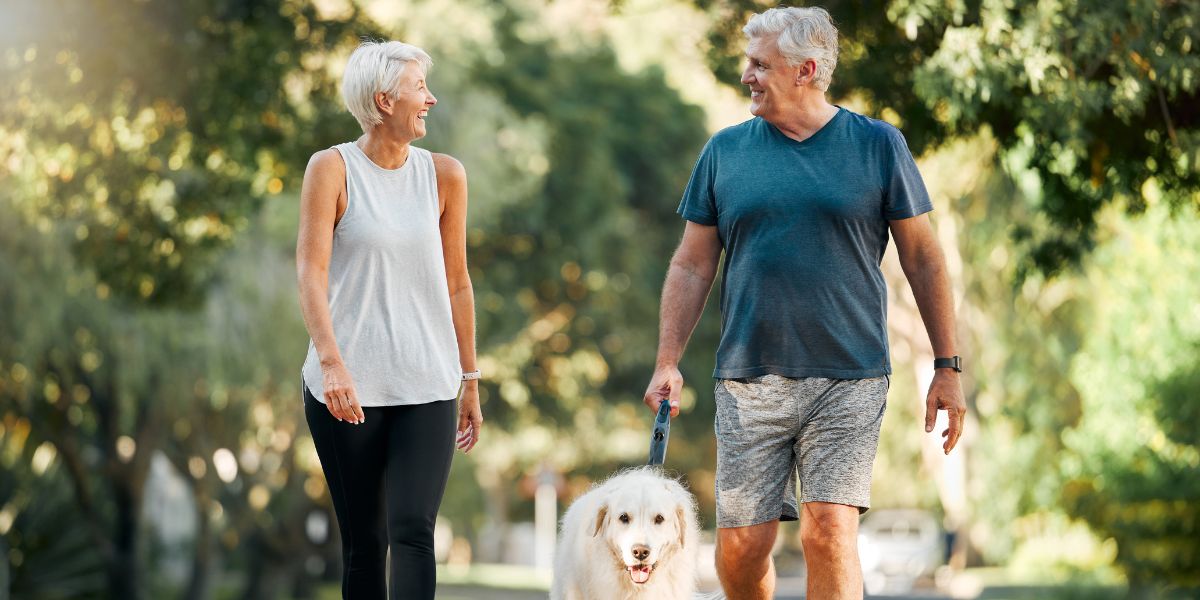Maintaining a healthy lifestyle can be challenging, especially when it comes to exercise. Although exercise is known to benefit our general well-being, many of us are unaware of the precise duration and intensity required to maintain good health and longevity.
However, recent research published in the Journal Circulation has provided some clear guidelines on this topic. Providing clarity on how long we need to exercise so we can age better.
It offers valuable insights into how much exercise can help you achieve your health goals and lead a longer, healthier life.
Why Do We Need Exercise In Order To Age Better?
A significant portion of the population falls short of the recommended physical activity levels necessary for achieving optimal health, which entails burning a minimum of 700 to 1,000 calories per week through regular exercise.
Despite sounding too good to be true, decades of scientific research have validated the numerous benefits of exercise, including improved health and longevity. Even adding as little as 30 minutes of moderately intense activity to your daily routine can help ward off a range of serious medical conditions.
Regular exercise can help reduce the chances of:
- Heart disease
- Diabetes
- Depression, and
- Certain types of cancer
Regular exercise can also promote the following:
- Better sleep
- Relieve stress
- Maintain a healthy weight
- Enhance mood and cognitive function, and
- Boost sexual performance.
The American Medical Association (AMA) found that both younger and older people benefit from long-term exercise, whether it's high-intensity or moderate. While younger people tend to prefer high-intensity workouts, older adults often choose moderate-intensity exercise, such as walking or hiking for example.
However, the study did not find any evidence that one type of exercise was better than the other for seniors compared to younger individuals. The study suggests that in addition to moderate-intensity exercise, older adults who are generally healthy can also benefit from high-intensity exercise.
How Much Exercise Do We Need According To Studies
To determine how much exercise is appropriate for you, consider your current fitness level and objectives, the specific activities you plan to perform, and any deficiencies in strength, flexibility, or balance.
The last thing we want you to do is get injured because you went beyond your abilities too quickly.
How Much Aerobic Exercise?
According to the Centers for Disease Control (CDC), it's highly recommended to engage in at least 150 minutes of physical activity per week. This can be achieved through moderate-intensity exercise or more high-intense workouts totaling 75 minutes.
As you continue to improve your fitness level, you can increase your exercise duration and intensity to reap even more health benefits.
It's possible to break up the 150-minute goal into smaller sessions, such as 30 minutes of exercise five times per week or two 15-minute sessions in a single day. It's important to find a schedule that suits your lifestyle and daily routine to make exercise a sustainable habit.
Most importantly, something you'll actually enjoy and stick to. More on that later.
How Much Strength Training?
In order to maintain good health and vitality, engaging in more than just aerobic exercise is essential. Regular muscle-strengthening activities should be performed at least twice a week to prevent muscle loss as you age.
We won't go into estrogen and testosterone in this article as it requires its own post, but as we age, these become important markers to watch.
To maximize the benefits of these activities, it is recommended to perform them until you are unable to complete another repetition without assistance. A repetition is considered one complete motion of an activity, such as lifting a weight or performing a single push-up. Aim for 8-12 repetitions per movement. While completing at least one set of muscle-strengthening activities is advisable, performing two or three sets is even more beneficial.
There are several ways to strengthen your muscles, whether at home or at the gym. It is important to select activities that target all of the major muscle groups in your body, including your:
- Legs
- Hips
- Back
- Chest, abs
- Shoulders and arms
In cases where chronic health conditions may hinder your ability to adhere to these guidelines, engaging in physical activity within the limits of your abilities is important. This will ensure that you can still maintain a healthy level of physical activity while considering any limitations that may be present.
For individuals who are older and may have chronic fatigue, it's important to prioritise safety and consider exercises that are low-impact and gentle on the joints while still promoting muscle building and overall strength. Always consult with a healthcare professional before starting any new exercise routine, especially if you have underlying health conditions. If this is you, here are some that we recommend:
Bodyweight Exercises:
- Wall Push-Ups: These are a modified version of push-ups that are easier on the joints and can help strengthen the chest and arms.
- Bodyweight Squats: A simple squatting motion can help work the leg muscles without putting too much strain on the joints.
- Seated Leg Lifts: While sitting in a sturdy chair, lift your legs one at a time to work the thigh muscles.
Resistance Band Exercises:
- Banded Rows: Attach a resistance band to a stationary object and pull the band toward your body while sitting or standing. This works the muscles of the upper back.
- Banded Leg Press: While seated, loop a resistance band around your feet and push your feet forward against the band's resistance, working your leg muscles.
Yoga and Stretching:
- Yoga Poses: Gentle yoga poses can improve flexibility and promote muscle strength without placing excessive strain on the body. Poses like Downward Dog, Child's Pose, and Warrior I can be beneficial.
- Stretching: Regular stretching routines can help maintain flexibility and reduce the risk of injury. Focus on stretching all major muscle groups.
Aquatic Exercises:
- Water Aerobics: Exercising in water provides resistance while minimizing impact on joints. Water aerobics classes or swimming can be excellent options for building muscle without excessive strain.
Tai Chi:
- Tai Chi: This gentle and flowing martial art can improve balance, flexibility, and muscle strength. It's particularly suitable for older adults and those with chronic fatigue.
Bodyweight Isometric Exercises:
- Planks: Holding a plank position engages the core muscles and can be adjusted based on your fitness level.
- Wall Sits: This involves sitting against a wall with your knees bent at a 90-degree angle, engaging the leg muscles.
Remember, the key is to start slowly and gradually increase intensity as your body adapts. Listen to your body and don't push yourself too hard. It's also a good idea to work with a qualified fitness instructor or physical therapist who can tailor exercises to your specific needs and limitations. Always prioritise safety and focus on exercises that make you feel comfortable and energised rather than fatigued. The last thing we want is for you to injure yourself.
How Much Balance Training?
If you feel unsteady or dizzy, seeking advice from a healthcare professional is a wise decision. They can recommend exercises that can help improve your balance. The CDC suggests that you aim for three 30-minute balance sessions per week and light walking for at least 30 minutes twice a week. This routine not only enhances your balance but also promotes overall well-being.
How Much Stretching?
To prevent injuries, it's crucial to stretch properly after exercising. Take your time and slowly stretch each muscle group, repeating the process. Aim to stretch for at least 10-15 minutes after each workout.
As for specific stretches, here's a rough guide in one medical that could help you get started.
It's common to experience muscle soreness, especially if you're new to exercise. However, if your body isn't recovering between workouts, it could be a sign of overtraining. Beginners and older adults may require more recovery time than younger individuals. Remember, exercise should leave you feeling energised, not drained.
If you feel overly tired, consider reducing the intensity or frequency of your workouts until you find the perfect balance that leaves you feeling refreshed and revitalised.
Cardio, Strength, Flexibility, And Balance For A Longer Life
According to Harvard Health, when it comes to designing an exercise program that will yield the best possible results, it's important to ensure that four key components are included:
- Cardio training
- Strength and conditioning
- Flexibility, and
- Balance
Each of these components plays a vital role in improving overall fitness and health. Cardio training is essential for improving heart health and increasing endurance, while strength and conditioning exercises help to build muscle and improve overall strength. Flexibility exercises are crucial for improving range of motion and preventing injury, and balance exercises help to improve coordination and stability.
Cardio Training
Aerobic exercise should be the focal point of any fitness routine to achieve optimal health benefits. Engaging in aerobic exercise entails a significant elevation in heart rate.
While such exercises typically necessitate full-body movement, the focus is primarily on the heart and lungs, commonly referred to as "cardio" workouts due to their challenging yet beneficial impact on the cardiovascular system.
Whether it's walking, swimming, or cycling, provided that the activity is performed correctly, it can prompt faster breathing and elevate your heart rate. The majority of research on the disease-fighting benefits of aerobic exercise centres around activities, such as:
- Walking
- Swimming
- Running
- Rowing, and
- Cycling
For moderate-intensity aerobic exercise, brisk walking or cycling that increases your heart rate is recommended and is considered safe for most individuals. However, greater health benefits can be obtained by increasing the intensity and duration of your workout.
Strength Training
Building muscle and keeping our bones healthy is important as we age. One way to achieve this is through strength or "resistance" training.
Incorporating strength training into your exercise routine 2-3 times per week can significantly benefit your overall health and well-being. You can maintain and even build muscle mass by performing exercises such as:
- Squats
- Lunges
- Crunches
- Push-ups, and
- Pull-ups
These exercises can help prevent falls and improve your balance. Harvard Health recommends both isometric exercises, such as planks and leg lifts, and isotonic exercises, such as bicep curls and bench presses, to achieve the best results.
The older we get, our bones can weaken due to calcium loss, but strength training can help slow down or even reverse this process. In addition to improving our physical appearance and well-being, strength training enhances our capacity to perform daily tasks like lifting objects, walking, and climbing stairs.
Increasing strength can be done using the following:
- Therabands
- Cable weight machines
- Free weights
- Body weight movements and even
- Working in the garden
Stronger muscles can also help us move around and stay balanced, which can help lower the risk of accidents and injuries. Remember, to effectively manage weight, it’s crucial to have higher lean body mass as muscle burns more calories per pound than fat.
Flexibility
It's crucial to ensure that you incorporate stretching into your exercise routine. As we age, our muscles tend to lose their flexibility and strength, leading to various issues such as back pain and stress.
Stretching plays a vital role in counteracting these problems by relaxing the fibers surrounding our muscles and tendons. Furthermore, stretching can also enhance our posture and balance, enabling us to stand taller and straighter.
Balance
As we age, our balance can decline, leading to a higher risk of falls and injuries. Fortunately, incorporating balance exercises into our daily routine can significantly reduce this risk.
These exercises don't take much time and can easily be done as part of our warm-up before workouts. In addition, strength training can also help improve balance. Activities like Tai Chi, Yoga, and Pilates can further enhance our balance through movements that promote stability. Don't let age compromise your balance; take action and incorporate these exercises into your routine today.
Conclusion
Regardless of your age, exercise is crucial for improving your health and well-being. Unfortunately, many people have replaced physical activities with sedentary pastimes such as watching TV, browsing the net, or playing video games.
Regular exercise, ideally every day, is the best thing you can do for your health. In the short term, exercise can effectively regulate appetite, elevate mood, and enhance sleep quality. Committing to a healthy lifestyle can also enjoy many long-term benefits, such as a decreased risk of heart disease and numerous other health conditions.























